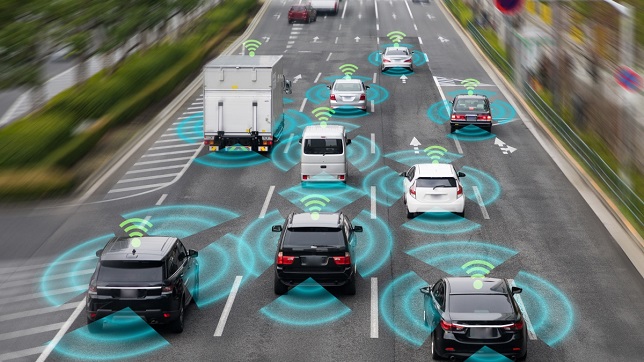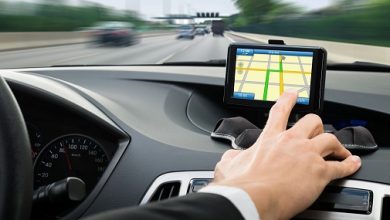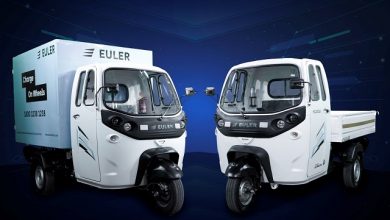Usage Based Insurance – Leveraging interoperability in the era of Connected Vehicles

In 1913, Sir Henry Ford revolutionized the auto industry and the world when he invented the assembly line. The automotive industry exploded, and more Americans started owning and driving cars. Restaurants added drive-through lanes so people could buy food and eat in their cars. There were problems with this new model; long wait times sitting in the car did not make for great experience and trained short order cooks were high in demand so the wages rose and so did the cost of food. Borrowing from Henry Ford, the McDonald brothers created an assembly line in the kitchen which increased efficiency and reduced the cost.

After perfecting the operating model, McDonald’s was struggling to expand. The royalty fees for franchises left very little cash to fuel the expansion. Harry Sonneborn, who later went onto become President and Chief Executive, McDonalds, asked a pertinent question ‘What business are we in?’ and realised that they were not in the food business but the real estate business. This pivoted the company into a new model. McDonald’s would buy the land that franchises were to run their outlet on at long-term fixed interest rates and lease it to the franchise owner at a markup. They would earn royalty fees from franchisees and collect rent, as well as keep adding real estate assets to its portfolio. Borrowing from Harry Sonneborn, automakers need to ask themselves, ‘What business are we in?’. Most likely, the answer would be ‘Software Business’.
In 2021, there were 139.6 million connected cars in the US which is set to grow to 166.5 million by 2025. It is estimated that 7 out 10 drivers would be driving a connected car sending petabytes for data to the automakers every day. The products and services based on vehicle data will generate between USD 25 – 30 billion by 2025 for US automakers and grow 5X by 2030. This line of business will run at significantly higher margins and contribute a majority share in the overall profits. The probability of succeeding at pivoting automotive business from vehicle manufacturing to software hinges on automaker’s ability to:
- Rapidly identify opportunities, build prototypes, launch, and iterate
- Choose the right monetisation models – usage based, revenue sharing, timely subscription
- Develop new business models built on technological innovation and partnerships
In this paper, we examine usage-based motor insurance its terms of its current market status. Further, we analyse the various business and monetisation models and, make recommendation on expansion of usage – based insurance supported by a strong ecosystem.
Usage Based Insurance
Motor insurance underwriting model has been based on broad demographic characteristics like a driver’s age, gender, residence, education level, or credit score. This meant that one’s insurance cost would be dictated by the driving behaviour of the people with whom they share broad demographic attributes but little else. Instead, usage–based insurance uses telematics data such as speed, acceleration, hard braking, phone used while driving, time of the day and miles driven to build individualistic driving profile and adjusts the insurance premium based on that.

There have been proof of concept, minimum viable products, and limited product launches for usage-based insurance (UBI). In 2022, TransUnion Insurance and Trends Report conducted noted that 49% of the drivers who were offered UBI options opted into it, buying the promise of lowering car insurance rates.
Nearly half of the ones who opted in, got a discount on their insurance premium owing to their good driving behaviour. The results proved effective in convincing drivers that good driving behaviour can translate into lower cost of vehicle ownership.
The report highlighted that most drivers who opted in the program were satisfied with their choice, according to their survey. Nearly two-thirds (64%) were “very satisfied” or “extremely satisfied.” About a quarter (26%) of respondents said they were “neutral” about their experience.
Vehicle manufacturers and insurers alike consider UBI to be ripe for mass adoption. Automotive industry needs to solve for an agile business model and a right monetisation model, to make UBI synonymous with motor insurance and realise its full monetisation potential.
Building the API Economy
Insurance Provider Telematics Model is the first and the most prominent model in the US market. It is characterised by insurance providers collecting vehicle and driver data on their own. Travelers IntelliDrive is one example of this model. IntelliDrive mobile application makes use of the driver’s phone’s GPS and timestamp data to compute acceleration, speed, distance driven, phone use and night-time driving. This information is plugged into actuarial models to determine the premium discounts that Travelers can offer to its motor insurance customers. Nationwide Insurance SmartRide is a variation of this model in which they implant a telematics device in the vehicle’s On-Board Diagnostics Port (OBD-II) to collect vehicle data. The cost of procuring telematics devices, installing them and / or building specialised applications and setting up the data infrastructure slows down the speed of adoption and lowers the margins on the offering. Nonetheless, the popularity of the offering has compelled every major insurance provider to have a Usage-Based Insurance product available for its customers.

The automakers recognised the opportunity to enhance the customer experience and expand the scope for usage-based insurance by tying up with insurance providers. This led to the genesis of the closed – partner model. In this model, the driver authorises the car manufacturer to share the vehicle and driver data which is collected through multiple sensors in a connected vehicle with the insurance provider who in turn provides usage-based insurance premium discounts to the driver. It should be noted here that the insurance provider is responsible for selling usage-based insurance through the existing channels (agent, bancassurance, online, etc.). For example, State Farm which was using mobile application for its Drive Safe and Save Program, has recently built a partnership with Ford to improve its offering. Connected Car customers with eligible connected Ford and Lincoln Vehicles can straight away opt into the State Farm UBI program.
This is a win – win situation for State Farm and Ford Motor Company. State Farm would be able to get more accurate data to base its discount computations at a fraction of the cost. Ford customers would get additional value from owning a Ford Connected Vehicle. In the future, data sharing partnership can be expanded to assess incidents and damages which opens the possibility for end-to-end digitised claims verification and settlement.
However, the closed partner model solves the problem of adoption but only for a fraction of people.
Imagine you are enticed to opt in for usage-based insurance, but your automaker has not tied with your existing motor insurance vendor. It leaves you with two options:
- Go through hassles associated with L1 Model with your existing insurance provider (assuming they have such offering) or,
- Switch the insurance provider who has tied with your carmaker but lose the renewal benefits
Secondly, it is difficult to achieve scale in this model as the auto manufacturer IT teams need to work together to define the specifications and tailor the data connectors (Data APIs / Data Pipelines) for each insurance partner.
Path to Monetisation
In simple terms, Insurance companies’ earnings are the sum of the premiums less the claims. Aggressive strategy of making riskier bets can get greater-than-expected-claims which will compromise the earnings. On the other hand, conservative strategy of keeping premiums high will result in loss of market share to competition, ultimately lowering the earnings.
In the case of motor insurance, Insurance companies using the driving behaviour and vehicle health data can predict the probability and value of the claims more accurately. They can fine tune the premium pricing and transfer the benefits of lower premium (if any) to the policy buyer. All insurance companies will have to adopt usage-based insurance to protect their market share.
In the closed partner model, automakers monetise the vehicle and driving data by either charging a percentage of the premium on the policies sold or as a variable cost for data being provided as service to the insurance company. Apart from the adoption and scalability issues discussed above, this model fails to maximise the monetisation potential.
Open Ecosystem Model: API Monetisation
The open ecosystem model is characterised by automakers making processed data available to the authorised insurance companies through public APIs. The underlying data schema and specifications should be standardized and published so that any insurance company can consume the data and build neo-insurance products to better serve the end consumer i.e., vehicle owners.
Case Study – AccuWeather Self Service Developer Portal
AccuWeather, recently launched a self-service developer portal that operates as an online store for their API packages and as a hub for their external developer community. The inventory of monetized AccuWeather APIs spans a spectrum designed to fit different developer needs. For example, one paid option offers continuous updates in near-real time, while another free option offers more periodic updates for developers who want to keep traffic demands or costs low. Within 10 months of launch, the portal had attracted more than 24,000 developers, issued 11,000 API keys, and generated hundreds of paid package purchases. AccuWeather recognized the unique value of their data—and of easy access to it—and was able to directly monetize its APIs. At the same time, they were able to derive indirect value through a growing developer ecosystem around their services—leading to exposure in new markets as developers use their APIs in new ways.
Automakers can adopt a tiered payment model based on the nature of the data being used and the number of API calls. We have created some tiers for illustrative purposes:

The volume of API calls increases with the increases in number of customers who have opted in. The ‘per-call’ pricing serves as a proxy for revenue sharing. The volume of the API calls is also directly correlated to the granularity of data and thereby, the accuracy of the underwriting process. Thus, the rates increase as more is data consumed to perfect the premium calculation and improve the earnings. Differential pricing across volume-based tiers attracts more Insurance companies to conduct proof of concept and trials at lower costs.
We recommend bundling the APIs based on the nature of the data. The rationale is two-fold. Firstly, the difference between the basic and advanced set of APIs is linked with accuracy of the underwriting process itself. Deeper understanding of the driving behaviour and condition of the vehicle improves the statistical models used for predicting claims risk. Secondly, the premium set of APIs allows insurance companies to verify, assess and approve the claims reducing or eliminating the manual steps involved in the claim approval today. This will provide Insurers a competitive edge in the market and automakers would have their share as enablers of the innovation.
Case Study – General Motor’s OnStar Insurance Services
General Motor’s OnStar, debuted in 1996, as a built-in GPS tracker and emergency communication system. The early start made General Motors (GM) one of the data collection leaders. The company has logged more than 121,000 TB of data usage across the Buick, Cadillac, Chevrolet, and GMC brands since the launch of 4G LTE in 2014.
For the motorists, who choose OnStar Insurance, GM can utilise the massive amounts of posteriori data on driving behaviour and vehicle mechanics to go a step further than offering discounts. They can provide it for actuarial pricing of premium as part of the underwriting process.
During the pandemic, when people saw their cars sitting unused for months, many began to wonder why they are paying for the coverage they don’t need. Altered and often reduced driving activity created a receptive market for OnStar’s Usage-Based Insurance (OnStar Insurance), which was in development before the COVID-19 pandemic began.
OnStar Insurance Services, GM’s insurance agency, rolled – out OnStar Insurance in Arizona in November 2020. They are the exclusive agents for OnStar Insurance. The policies sold through them are underwritten and issued by Homesite Insurance Group, an affiliate of American Family Insurance.
Like General Motors, automakers can make use of their captive finance units to co-develop insurance products. Such products should be sold under revenue sharing arrangements where instead of charging for API usage, automakers take a share in the earnings of the product.
Typically, Insurance companies would pay commissions to the channel partners like banks or agents for selling the insurance products. Automakers can leverage their dealership networks to increase their margins.
In conclusion, we propose a hybrid model where automakers make the data available for insurers by creating an open – API ecosystem and co-develop their own UBI offerings which they sell exclusively through their dealer and direct-to-customer channels at high margins.
Author:

Aniket Aggarwal
Consulting Partner – Automotive and Assembly
LTI
Aniket is a strategy consulting professional with a breadth of experience in ‘automotive and assembly’ vertical. He has been advising CXOs and senior leadership of client organisations on digital transformation strategies, change management and value realisation. He has also been engaging with clients to evangelize NextGen Digital Technologies to drive the next wave of operational excellence and business growth.
Published in Telematics Wire





